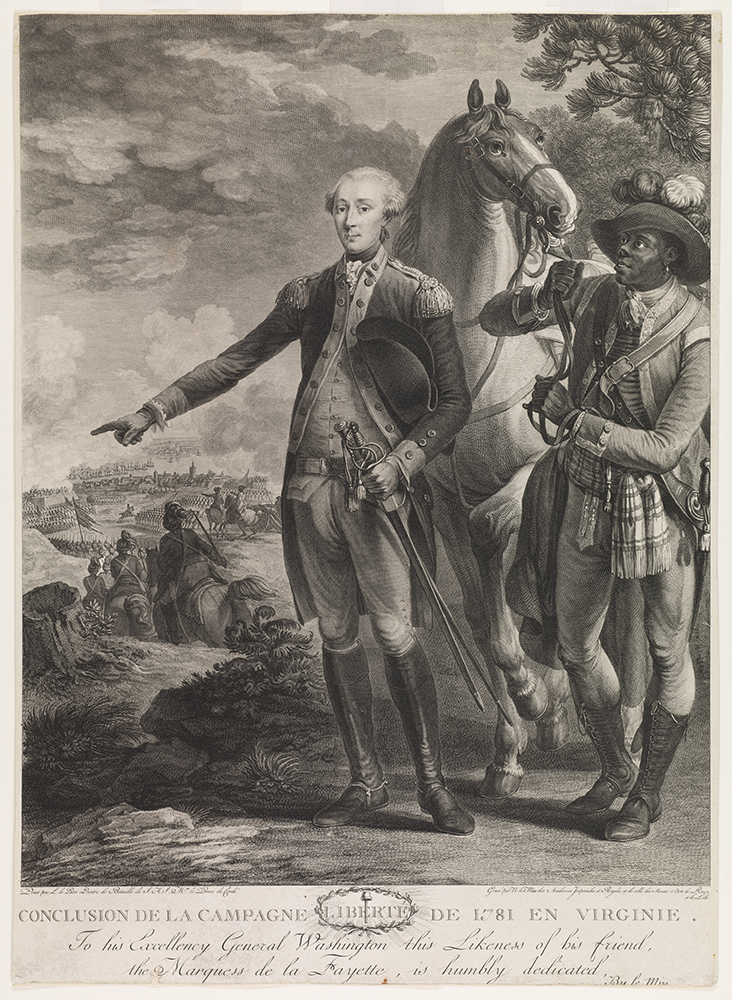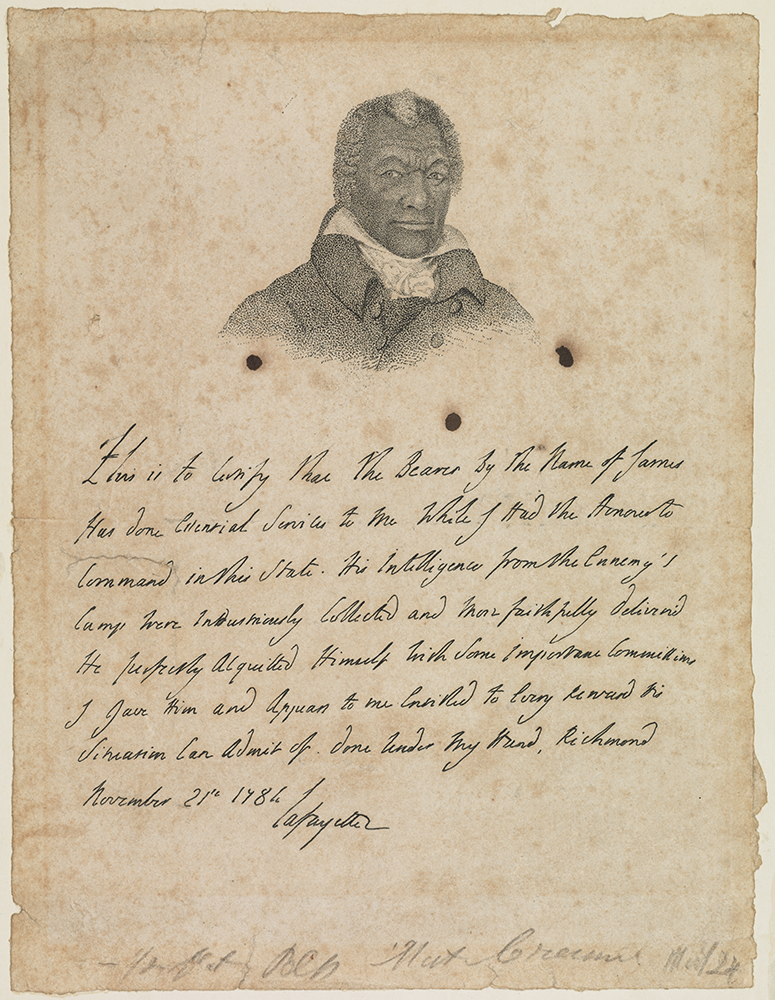A small plaque in The Story of Virginia exhibition at the VMHC tells the story of James Armistead Lafayette:
James Armistead Lafayette was an enslaved man who, during the American Revolution, volunteered to join the Continental Army and served under the Marquis de Lafayette. He was a spy, reporting to Lafayette the actions of Benedict Arnold (after he turned to the British) and eventually Lord Cornwallis leading up to the battle of Yorktown. He informed the Continental Army of the British movements and strategies while also feeding the British false information to keep them at bay.
James Armistead Lafayette played a pivotal role in leading the British to the attack at Yorktown, yet he is very rarely mentioned in accounts of the war. The Marquis de Lafayette abhorred slavery and wanted James to be free more than anything. When James was granted his freedom after the war, he took the last name Lafayette because the general had helped him so much.


